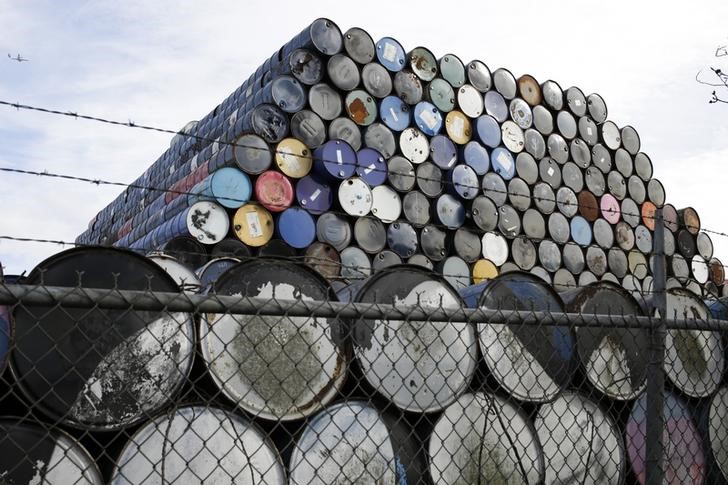Chip stocks fall with Nvidia after data center rev disappointment
By Peter Nurse
Investing.com -- Oil prices edged lower from elevated levels Tuesday, ahead of the release of the latest snapshot of U.S. supply and as traders focus on this week’s OPEC+ meeting.
By 8:25 AM ET (1325 GMT), U.S. crude futures were down 0.7% at $83.44 a barrel, while Brent futures dropped 0.7% at $84.09 a barrel. The Nymex contract hit a seven-high year last week, while the Brent contract climbed to a three-year peak.
U.S. Gasoline RBOB Futures were down 0.6% at $2.3955 a gallon.
Traders have decided to take some profits Tuesday after oil prices surged to multi-year highs last week, helped by post-pandemic demand rebounding around the globe.
Attention is firmly fixed on Thursday’s meeting of the Organization of the Petroleum Exporting Countries and their allies including Russia, a group called OPEC+, where these major producers will discuss future supply levels.
There has been plenty of pressure on these countries to increase output to limit price increases. But a number of producers have expressed caution about increasing supply too quickly, and they are widely expected to stick to their plan to add 400,000 barrels per day of supply in December.
“Some of the members who have publicly supported the current easing plan in recent days include Angola and Nigeria,” said analysts at ING, in a note. “It makes sense that these two countries would support the more cautious approach. They have generally struggled to increase output and both are pumping below their agreed production levels. Therefore, if they can't increase output, it makes sense to want higher prices.”
Illustrating the difficulties some OPEC+ members are having in increasing supply, even if they wanted to, a Reuters survey found that the group increased output by only 190,000 barrels per day in October, below the 254,000 b/d they could have increased output by under the current deal. This was due to involuntary outages and limited capacity in some smaller producers.
Later Tuesday, the industry body American Petroleum Institute releases its supply report, which is expected to show another rise in crude inventories.
